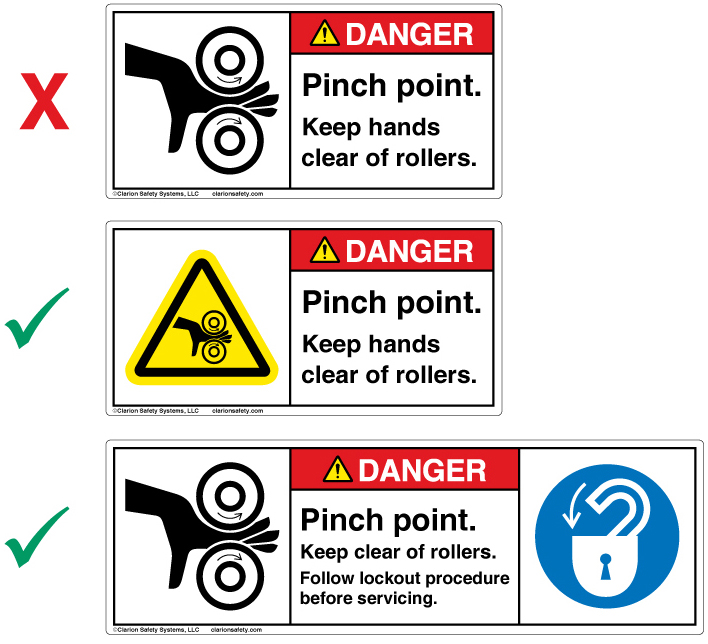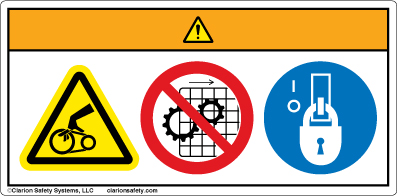What the Latest ANSI and ISO Product Safety Label Standards Updates Mean for You
Posted by Clarion Safety Systems | 26th Jan 2017

The legal obligation of product manufacturers is to meet or exceed the current versions of standards related to their products when they’re placed into commerce. Using the principal product safety label standards for the design and layout of labels is key to fulfilling this requirement.
Get Our Free 2022 ANSI & ISO Warning Guide - Designed for Manufacturers
In the U.S., the primary product safety label standard is the ANSI Z535.4 Standard for Product Safety Signs and Labels , last published in 2011. The ANSI Z535.4 standard is in the process of being balloted for reaffirmation without changes; if that occurs this means that the next version will be identical to the 2011 standard.
Internationally, ANSI Z535.4’s counterpart is ISO 3864-2 Graphical symbols – Safety Colours and safety signs – Part 2: Design principles for product safety labels. ISO 3864-2, originally published in 2004, was recently revised in December 2016, with the publication of its second edition. The changes made to labeling formats are significant, and they open up new opportunities for product manufacturers to better warn people about hazards associated with their products.
ISO 3864-2:2016 includes two major changes to ISO label formats:
1. The safety label format that used a single safety symbol without an ISO colored surround shape was removed from the standard. From the ISO 3864-2 standard’s perspective, product safety labels must use at least one ISO-formatted safety symbol (meaning, the symbol is placed in an ISO 3864-colored surround shape) in addition to the “general warning sign” that serves as the safety alert symbol on the label’s severity level panel. Symbols without ISO colored surround shapes can be used in addition to one or more ISO formatted symbols. Such symbols are called “supplementary safety symbols” by ISO.

2. A new “wordless” format that conveys risk severity was added to the standard. This new label format uses what ISO calls a “hazard severity panel” but no signal word. It communicates the level of risk through color-coding of the hazard severity panel. This format option eliminates words – making translations unnecessary.

As you evaluate your safety labels in line with these updates, keep in mind that Clarion is here to help. Our expertise in the safety label standards and our experience in applying them across hundreds of industries can help you decide which formats are right for you. We’re active members of ANSI and ISO and have more than two decades of experience in advancing safety communication. In fact, our CEO is chairman of both the ANSI Z535 Committee for Safety Signs and Colors and of ANSI’s U.S. TAG to ISO/TC 145, the ISO standards committee responsible for safety signs, labels, colors and symbols. This group is responsible for writing and developing ISO 3864-2.
We stand ready to help you reevaluate your safety labels and choose the formats that best suit your products and markets. We offer safety label assessments , where we assess your labels and ensure they’re up-to-date and that they meet today’s requirements. We look forward to collaborating with you!